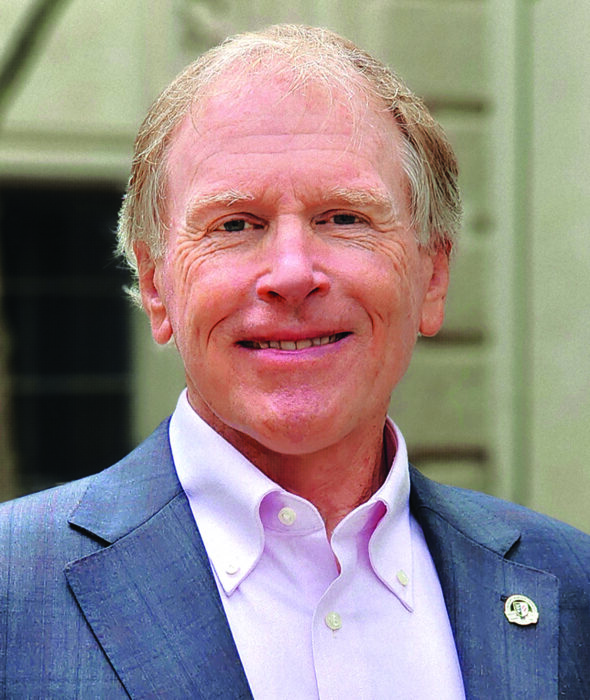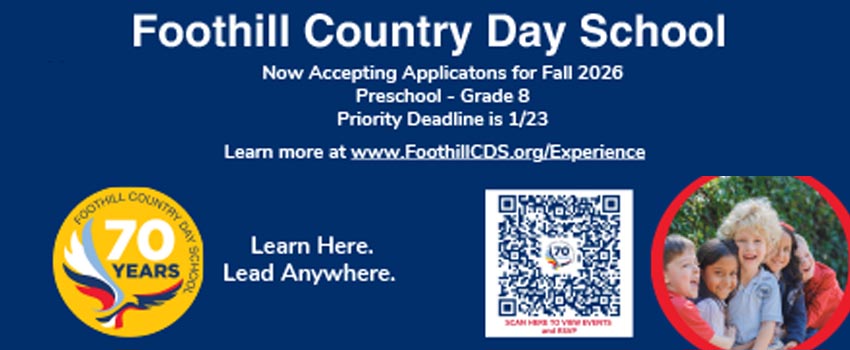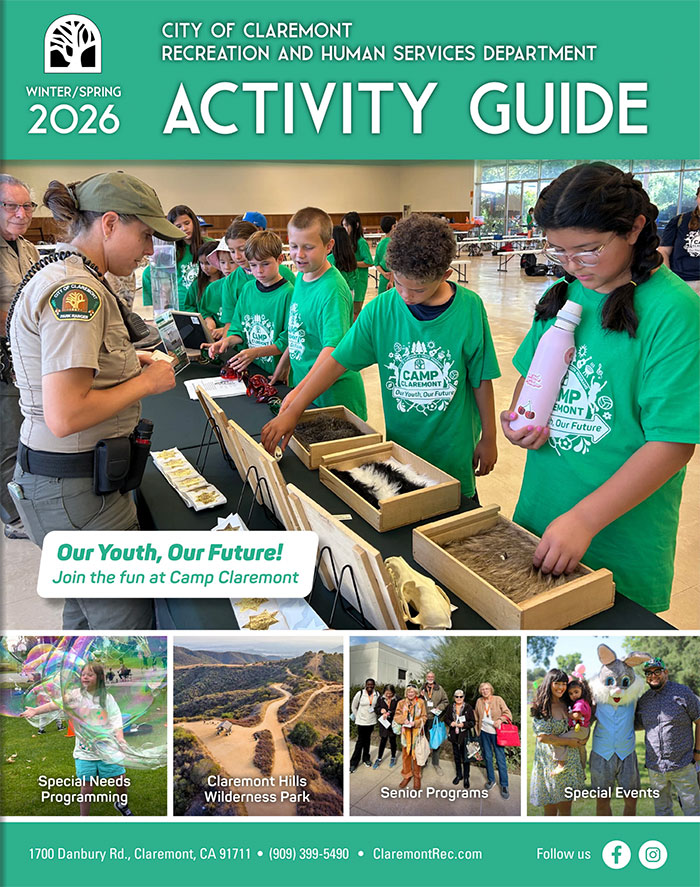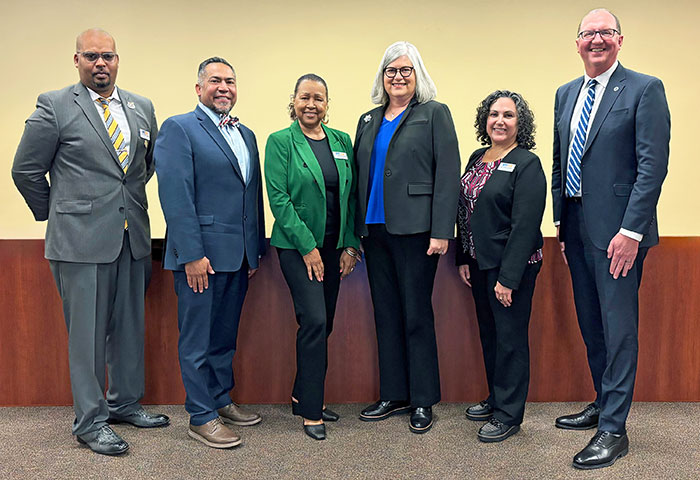CGU reimagines its financial future: 10 years of deficits prompt hard look

by Mick Rhodes | editor@claremont-courier.com
On Monday, September 9, Claremont Graduate University Interim President Tim Kirley sent an email with the subject line “Charting the Future of Claremont Graduate University” to CGU students, faculty, staff, alumni, and stakeholders.
In it, Kirley explained CGU is at a financial crossroads.
“CGU has been operating at a deficit for more than 10 years,” Kirley wrote. “That said, we are now focusing intently on a course correction, which includes the need to significantly grow the endowment, increase research funding, and candidly evaluate our assets, programs, and internal operations. We need to move diligently and deliberately in this process.”
Kirley’s staff reached out to the Courier in an effort to bring the entire community up to speed with what some might be surprised to hear: that one of the esteemed Claremont Colleges was having financial challenges.
What follows is our discussion in Q&A format.
Courier: One of the reasons CGU finds itself in this situation is due to a significant loss of revenue that before 2000 had come from the university providing a range of services to the Claremont Colleges Consortium, which now employs an outside service company to perform those services. Why did it take CGU 24 years to react to this?
Kirley: “This email that we sent out is not reacting to that event that took place 24 years ago. It’s really to give a context to our community as to why when we first started the setup, the role of the graduate university inside the consortium was different than it is today. We were a service provider in those days. And today we’re a stand-alone university. And so there was a failure to replace those revenue services, but that was just for historical context. That was the purpose there.
“So much of what we’re facing is what higher education is facing — changing demographics, et cetera, changing modalities, requirements for greater investment in technology. But the historical context was just to have people understand how long ago it was that we had a stable environment with a revenue stream other than tuition revenue.
“And that’s really the key. That’s what we need to decrease our dependence upon is tuition revenue.”
• You have had a long, successful career as an executive in financial services. This gives you a unique perspective into matters of profit and loss. Your statement indicates CGU has been operating at a deficit for more than a decade. If you were looking at this as a private sector business, with your financial services hat on, would you say the fact that CGU had been operating at a loss for so long represented a failure in leadership? If so, how? And if not, how would you characterize it?
“I think I will just resist the temptation or the question of saying as a for-profit executive, apply all my learnings and experiences to the nonprofit world. That’s not a path that I want to go down. They are fundamentally different.
“As someone in a leadership position in a commercial enterprise, when you have a [profit and loss] and you have incentive compensation as tools to align behaviors with overall objectives, those are very effective tools. In the nonprofit world, not so much.
“As a [CGU] board member when I joined the board, I had to be able to set aside some of my experiences because they don’t apply. But the experiences that I’ve had that I believe apply very well are that when you have a problem, it’s time to face up to it. And in order to change behavior, you need to have everyone on board and engaged in that process of change. It requires trust, disclosure, transparency, candor, all of those. Which is about building the personal relationships with the people that we work with.
• Still, with such a runway between financial stability and where CGU finds itself today, more than 10 years later, it begs the question that since it hasn’t been addressed until now, does that represent a failure of leadership or a lack of vision?
“It’s a fair question. I just want to separate applying all life’s learnings in the commercial world to the nonprofit world. So, it was not a situation where we haven’t done anything or the university hasn’t done anything, or leadership has not acted during the course of those 10 years. There were measures taken. There were strategic choices made in order to address the situation. It’s been a topic of focus and discussion for leadership within the university and the board for all of that time.
“We were making great progress on the enrollment approach — trying to grow our way out of the operating deficit — and then COVID happened, and really set us back. Then we had to regroup and craft new strategies on how to grow in this new environment. And when those strategies failed to deliver results a year ago, we then said, ‘Okay: past strategies have not worked. We need to regroup and rethink this.’”
Among the efforts CGU made over the last decade included redoubling efforts to lure more international students, many of which pay full tuition prices, Kirley said.
“So, we were in that position, and gaining some traction there, and then the political environment changed, and it was harder to bring international students.”
Kirley was reluctant to delve into specifics, but did say changes in federal immigration policy were the primary factors in reducing opportunities to bring in foreign students.
“There are circumstances beyond our control that impact this thing. And it’s not that we have done everything absolutely right, but these are factors that have changed.”
Kirley touted a successful strategy CGU implemented about four years ago to refresh class and program offerings.
“That’s a huge undertaking. It sounds easy enough to somebody without deep experience in the academic world, but it requires a lot of time by staff and faculty to create the coursework, and there’s an approval process from our accreditors that we go through, so it gets strung out a little bit on time. And, you’re making your best guess as to where the market is heading with some of these course offerings.”
The 22 new course offerings at CGU over this time have included healthcare and business data analytics and diagnostics.
“Our incoming class for summer/fall ’24, we have over 100 students from programs that didn’t exist three years ago. So there’s one that worked.”
Most of those new students are enrolled in 20% of the new courses, Kirley said.
“And so we have to be vigilant and see which of those new offerings is just not going to gain traction, we missed the marketplace, versus the ones that are going to slowly grow to get to become a sustainable offering.”
Kirley acknowledged this conversation about of testing the market and knowing when it’s time to cut your losses sounds much like private business strategy.
“It is similar in that respect. You don’t want to kid yourself into thinking that you know the market; you test the market, you try and anticipate where the market is headed, and then once you make your decisions you also have to be self-disciplined to say ‘We got this one right. We got this one wrong. We need to abandon that and focus elsewhere.’”
• What is the status of CGU’s endowment?
“Healthy, but we need it to be bigger. We have about $190 million in the endowment.”
• Why doesn’t CGU just use the endowment money to address its financial shortcomings?
“We receive a gift from a donor, and they may have a very firm view of what they would like their gift to be used for. Sometimes that is a building. Sometimes it is a scholarship in a specific area. Sometimes it is to enable the purchase or the fit out of a classroom. But it’s very specific in what the funds can be used for. Then we are going to honor that gift agreement in what the donor has asked us to do. And so we don’t have free rein for what we’re going to do.
“The pace of change in higher education is like the pace of change everywhere else: you’d love to have the free rein to be able to do what you want, but job one is to honor the donor and do what they’ve asked.”
• How much of CGU’s endowment is available for investment?
“In an endowment, you do have an investment policy committee that’s going to determine how things are invested. And for the most part, when a donor makes a gift, they will say to follow the investment guidelines of the endowment. They would have done their homework. It’s kind of rare that they would say, ‘I only want it invested in A, B, or C.’
Kirley served on CGU’s Investment Committee. He explained CGU’s $190 million endowment is made up of thousands of gifts created as a portfolio that does have balance and for most of the last decade, has been managed by Goldman Sachs.
“Our endowment is not significant enough so that we hire our own people to do those decisions.”
• How has CGU’s endowment performed over the time you’ve been on the board and interim president?
“We’ve been fortunate to do well. I think we’ve consistently had the top quartile kind of performance of endowments our size.”
• How do you and your advisors propose to grow CGU’s endowment going forward?
“We want to grow the endowment through philanthropy and greater gifts. We have a responsibility to be prudent investors and not try and achieve outsized returns. I’d be nervous if we were in the top 10 percent of investment returns compared to our peers, because that would make me think maybe we were being a little too aggressive. I wouldn’t want that. I’d like consistently really good performance.”
• Will CGU consider selling off any of its assets to raise funds, such as real estate holdings?
“That could be on the table. Because today as a graduate university so many of our students are working professionals — people who want to advance their career through achieving a higher credential — so today that means that they can take classes online. And as we’re seeing a shift in the demand from those students, we realize we may have more real estate than we need. And so looking at our portfolio of real estate is something that we have been doing.”
Kirley declined to name specific real estate holdings that may be under consideration for sale, as those decisions have yet to be finalized.
• In your email you wrote, ‘Enrollment alone is not the fix.’ What is the fix?
“I don’t have an answer, but I will say to you that if you pick 50 universities that would come to mind, and … how does this school do it? And how does that school do it? Their revenue would come from a variety of sources. I can’t think of a top 50 university that operates solely on tuition revenue. It’s a combination of tuition revenue, philanthropy, endowment earnings, research grants, and possibly other things. In the undergraduate world you would have revenue from dormitories, meals, and room and board. Some universities have hospitals, wellness centers. It’s an amalgamation of different revenue sources.
“And we have to be thoughtful enough to understand what would be appropriate for Claremont Graduate University.”
• What are some of the new revenue sources that CGU is considering?
“I don’t know that we need to get to new revenue sources, or instead shift the weighing. I don’t want to lower the amount of tuition revenue that’s coming in, but I would like to increase the philanthropy and grow the endowment. That would make a lot of sense for us to do that. And that way we have that pool of money to subsidize us in delivering the mission that we have at Claremont Graduate University.
“Research is another one of those areas. Traditionally in universities you’ll see a research stream that is significant in the most successful universities. That’s a more complicated one, it requires more upfront investment, so we have to be more careful about how we would choose to do that, but it’s one that we need to take a good look at.”
• Over the summer CGU hired consulting firm Tyton Partners to help it “assess our finances, explore the possibility of an academic partner, and provide specialized skills and deep experience that our leadership team does not possess,” according to your email. When will this analysis be complete? And when it is, will CGU share its findings with the community?
“I would hope that we’d see a recommendation from them towards the end of the year or first quarter of 2025. Then that report would be shared with the board in a discussion. I can’t answer the last question. I can’t speculate on what the outcome of that will be. That is going to go to the board and that will be the board’s decision, rather than me as an interim president.”
• The climate on U.S. college campuses is heightened, with student protesters nationwide demanding institutions of higher learning divest from companies profiting from the war in Gaza. Will CGU’s new financial path forward include reevaluating and/or refocusing its investments and investment strategies with respect to the war in Gaza?
“That discussion wouldn’t be part of what we’re doing with creating a new vision and sustainable model for CGU. That’s a separate discussion.”
• So the answer is no. Can you expand on that in any way?
“No, other than to say the focus on the work that’s being done is specific to designing a sustainable business model for the university. That I consider to be a different topic than the divestiture topic.”
• What’s your opinion on the divestiture topic? Do you have any thoughts on it?
“As important as that topic is for discussion, it’s not my focus right now. My focus right now is the university and being sure that we’re diligent in working to find a sustainable future.”
• Can you see why some people reading this story might think this topic has everything to do with CGU’s path forward and its financial future, as it reflects on the school’s values and priorities, and what better time to take a look at those values and priorities with respect to this issue than now, with everything on the table?
“I hear you … I’ll be happy to talk to you about this separate from what we’re [engaged] in right now, but we have to maintain a focus on defining the sustainable model for CGU. The divestiture topic, as important as it is, requires its own time. I’ll leave it at that. Again, I would discuss that with you, but not in the context of this conversation.”
• CGU’s Board is actively searching for a new president. If elected, will you serve?
“I’m not going to be. I don’t have the qualifications to do that. To run a world-class research graduate university takes a whole host of skills and experiences that I don’t have. I’m absolutely a role player here. I’m the known entity to faculty and administration. So, while a search is taking place [for a permanent president], I’m in this role to keep us moving forward so we don’t lose any ground while the search for the right person takes place. That’s not me.”
• Any final thoughts?
“CGU has a lot of strengths. This is the university saying, ‘We need to chart a new course.’ Things have changed. Students are different today than they were 30 years ago. How people learn and what they learn are dramatically different than they were 30, 40, 50 years ago. So we need to make changes to adjust to this new environment.
“The working professional is an easy example of that. We have to be able to serve those people and deliver education and an opportunity to learn that’s convenient to them. So that work … it’s time for us to be on top of that and focused on that, and then be able to do that within our economic means. And we want to grow our economic resources to build on the strengths that we have. We have a world-renowned faculty that’s great at what they do. We have incredible staff here. Our students are incredible people as well. We’re in Claremont, so we have that blessing. And we’re a member of the Claremont Consortium.
“We have a lot of strengths for us to build on, and I’m quite optimistic about the future.”










0 Comments